In this video we take a look at How To Lower Your Golf Scores, specifically by reducing the amount of double bogeys that are ruining your golf scores.
Double bogeys often come from 5 key areas of your golf game, and by using these easy-to-follow golf strategies, you can improve your golf.
Making birdies is all well and good, but as we can see from modern golf stats, avoiding double bogeys and other score card killers is actually how to get better at golf FAST!
Double bogeys (we all have them and hate them) and worse are the fastest, and most frustrating way to wreck a good scorecard, and learning how to play golf properly will help you limit the damage on your inevitable bad holes.
Avoiding double bogeys isn’t as sexy as making birdies, but with these simple golf tips, it is very, very achievable, and a sure-fire way to lower your golf scores for good.
This video will help you if you want to:
– Avoid score-killing golf holes
– Improve your golf course management
– Level up your golf strategy
– Instantly lower your golf scores
– Lower golf scores without changing your swing
—–
NOW AVAILABLE ONLINE LESSONS WITH MARK CROSSFIELD, check out his packages here: https://skillest.com/coach/markcrossfield
—–
SAVE MONEY and support the channel by using my affiliate links.
I’ve partnered with top companies to offer discounts on launch monitors, training aids, range finders, and more.
Check out all my affiliate deals here:
https://crossfieldgolf.info/Affiliate-Discounts
—–
Sign up for my FREE golf tips newsletter:
https://www.crossfieldgolf.com/
—–
Welcome to the Mark Crossfield Golf channel, your ultimate destination for all things golf! Whether you’re a beginner just learning how to swing a golf club or a seasoned golfer aiming to refine your golf swing, this channel is here to help you master every aspect of your golf swing. With a blend of expert golf instruction, golf tips, practical golf lessons and honest equipment reviews, Mark Crossfield provides you with everything you need to play your best golf.
At Mark Crossfield Golf, we know that mastering your golf swing and perfecting your golf grip are fundamental to becoming a better golfer. Our videos dive deep into the essentials of a solid golf swing, teaching you how to swing a golf club with precision and power. From golf swing basics to advanced golf swing drills and techniques, we cover it all. Learn the importance of a proper golf grip. Whether you’re looking to improve your golf swing takeaway or refine your golf swing tempo, we have the expert golf instruction you need.
Our channel offers a wide range of golf lessons tailored to golfers of all skill levels. If you’re new to the game, our beginner golf content will guide you through the fundamentals, including the golf grip, golf stance, and how to execute a consistent golf swing. For more experienced players, we provide advanced golf lessons on topics like ball striking and perfecting your golf swing. Each golf lesson is designed to be practical and actionable, so you can apply what you learn directly on the golf course and start seeing results.
Choosing the right equipment is crucial for any golfer. We provide thorough reviews of the best drivers and best irons to help you make informed decisions. Whether you’re searching for the best drivers for beginners or looking for high-performance golf clubs that can take your game to the next level, our reviews cover all the top options. Learn about the latest golf technology and discover which equipment is best suited for your game style. Our videos also explore how to use golf launch monitors and other golf training aids to improve your performance.
Every golfer knows that small adjustments can make a big difference. Our channel offers a wealth of golf swing tips designed to help you improve every part of your golf game. Learn how to hit the driver straight, avoid common mistakes, and develop a strategy for better golf shots. We provide detailed advice on mastering your short game and putting, ensuring you’re equipped with the skills needed to lower your scores. From fixing your slice to hitting longer drives, our golf swing tips are here to help you play smarter and more efficiently.
Understanding the mechanics of your golf swing is key to improvement. Our slow motion golf swing analysis breaks down each part of the swing, helping you identify areas for refinement. By performing slow motion golf swing analysis, you can make precise adjustments that lead to more consistent and powerful golf shots. This in-depth approach to golf instruction is ideal for golfers who want to understand the finer points of their golf swing and improve their overall technique.
Join us as we explore every aspect of golf, from golf swing basics to golf lessons for advanced players. We encourage you to leave comments, ask questions, and share your experiences.
So, double bogeies, what causes them? What really makes you have a double bogey and is wrecking your scorecard? I’m going to share with you some amazing data from the Aros database, which will show you exactly what causes these double bogeies and how to fix them. Remember, if you like this video, hit that like button. Don’t be afraid to subscribe as well for loads more free golf content. We want the double bogeies gone. But today’s question for the video is, how many double bogeies do you have in 18 holes? If you don’t know the answer to this question, have a guess. And if you want to find out how many double bogeies you should be having, we’ll put the answer down in those comments per index. So, you’re going to see graphs in this video. Just pause the video to digest them because they can be confusing. I get it. You’re going to see two numbers. The top number is the chance of making a double bogey if you do the mistakes that we’re talking about. The bottom number is out of all the double bogeies these players make. This is how often that mistake made that double bogey happen. Hopefully that makes sense. If it doesn’t, let me know in the comments. So, double chips to start. A double chip is hitting two chips to get the ball on the green. It’s not a double chip like where you double hit it. It’s where you hit the chip, you miss the green, then you have to hit another chip. So, the data around double chips is mindboggling and eyeopening. So, two handicappers down, they’re nearly 50% chance, 50% nearly chance that they’re going to make a double bogey. Their hole is going to result in a double bogey if they hit a double chip. And if you move anywhere up towards the 12 15 handicap range, it rockets skyrockets up to 75%. You’re almost nearly guaranteed to make a double bogey if you hit a double chip. This can be fixed. Let’s give you some tips. So, reducing those double chips is going to be massive. Great situation here. Bunker just staring at me. Doesn’t look like I’ve got much room from here. I can’t see the bottom of the pin. I can see this green is super rolling. And one of the first mistakes I see golfers make is they choose Hollywood shots when they don’t need to. And Hollywood shots make chipping harder because they don’t assess their surroundings that well. Watch this. If you’ve got the time to come up and assess the green complex, I can see from this position, from up here, I have loads of green to work with. Yes, it slopes a bit away, but it’s going to stop. I can absolutely just play my regular shot. I don’t need to go all Hollywood. I don’t need to make this harder by not assessing. I will look for any roll off. So, if this pin was cut closer to that bunker, I’d be thinking, got to go left to that pin. I don’t want to hit two chips. So, yes, I want to get it close, but I absolutely want to get it on the green utmost. Super interesting situation here for double chips. Loads of green. All seems pretty simple. There is a bit of a tear here. The amount of times I see golfers here take their log wedge, feel like they want to just chuck it up there, they not a bad shot, but because that pin is back on the green, they overthrow it. they miss the green in such a simple situation where if you’ve got the skills to practice with some different lofts and use different lofts something like a eight I am run in this situation like the chances of me missing the green with this club are super super like slim and a putter always a great option for me if I can putt wherever I can putt I will putt doesn’t mean I’m going to hit the balls close all the time but I’m not going to have a double chip. I am going to take them nearly off my scorecard, meaning my chances of double bogeies might be less than yours. Take the simplest option, hit the green. It’ll really help you. Recovery shots off the tea. So, this is an area where you hit your shot offline and you can’t go at the green. You’ve got to come out short, sideways, wherever. You can’t basically get a line to the flag. This is key for creating double bogeies. Not as crazy as you would think. better players again do way better. They’re much lower percentage than if you go up to like 20 index players. So those lower index around 22% it’s resulting in a double bogey, but you’re over the 50% rate with higher index golfers when it comes to having to hit a recovery off the tea. This is something that absolutely needs improving. This is going to be to do with better recovery shots from better players to higher handicappers as well as maybe not as hitting as far into the recovery area. But let’s get your recovery play a little sharper. So, three recovery shots with three options. The simple option just coming out sideways here. Big gap, plenty of room. If I chip out that way, you can see the percentage chance now of me getting down in three. Second option, this gap, it’s slightly smaller, but it pushes me more towards the green, which is this direction. It pushes me slightly forward. So, you can see if I chip out that way, which is pretty much as simple as this shot, I am going to just reduce that chance of get or increase that chance of getting down in three or less basically. But the third option going out this way towards the green complex might require me to hit a lower shot. It’s a smaller gap. Even a little bit of shaping might be needed. But if I can pull this one off, my chances of finishing the hole in three more shots from there on is just absolutely like I’m just winning and winning. But can you do it is the question. So the first option for you would be assess like what shot can you play? All these lies are quite equal. Not much guff around the ball. Just choosing a wedge to chip out over onto the fairway is an option I think 99% of the players who are watching this video will have. And again, you can play the same shot, same option, but trying to sneak it forward that little bit more. Again, reducing. You could even play the same shot and go this way and just chip it out forwards. Again, any chance you’ve got of moving that ball closer to the hole, you should be taking what you’re going to notice here. So, that was two clubs 52°. This is a seven iron shot. Oh, yeah. Pushing that up way up. That’s literally on the left side of the green. Oh yeah, take that all day long. Are you able to play chip and runs, full ones with different lofted clubs? If you’re not, these are shots you should be practicing. And I know it’s boring. And when I say this, lots of people just don’t actually take it on. But getting on a range and if I’m hitting my seven iron flat out, full out every time, just raking five balls across which you actually practice chipping out 60 yards, 100 yards with a seven iron is an absolute skill you all need to get better at. Most players when I get in this situation on course um lessons with them, they just go straight there. Always try and edge it as close to the green as possible within your skill set. And if you can develop your skill set to have a few fancy chip and runs with low lofty clubs, you’ll be amazed at how often they save you. Three putts. Do they result in double bogeies? Yes. So for two to scratch handicappers, it’s around 18%. There’s a good chance it’s going to be a double bogey. But if we move up to the 20 index golfers, so around 15 and 20 index, it’s over the 50% range. So over 50% chance that a free putt is going to result and end in a double bogey. This is something that absolutely can be fixed. Distance control with putting key skill and it works at every level. Even on the short putts, people don’t think of this. So three putts here. Breaking from the right side. So I’ve hit one right lip too hard. Going to go right lip a little softer. Let’s see if I can just oh drop it in. And see how I’m paying playing with distance control even on a short putt, not only to hole it, but to home in my precision on how hard I should be hitting. So if you got a sloping putt at your green, left, right, right to left, hit one where you hit hard center. Try and take the break out. Hit one really soft, take loads of break. Try and get good at holding even small putts by using skilled distance control. And then we all see golfers get on a putting green prior to a match or going to play, hitting some putts, trying to haul out sixfooters all day long. Practice some long putts, maybe do a nice ladder drill. So I’m going to put a marker ball out there a random distance. Let it roll down the slope. Now this next one, I want to try and get maybe two club head lengths ahead. Now my put is long, so I’m going to use one. Can I hit it a little harder than that? But I don’t want to go way past that ball. I want to just Oh, like that. Sneak just past it. And then the next one. Obviously working in brakes. Can I get that one to go just past that last one? Yes. That for me, if I’m doing that on a putting green before I play is suggesting that my distance control is quite dialed in. I’m ready to go and I might have a good day. Golfers, you do not practice distance control enough. Do it more. The data shows this. And don’t just think it’s only long putts. do it on those short ones as well. When it comes to penalty shots off the tea, as you can imagine, this is a massive reason for having double bogeies. We go from nearly 50% even to the good players down at the low indexes up to a whopping in the high 70% when it gets up to the 20 and around that index player. Reducing penalty shots off the tea is obvious but huge for reducing your score and keeping those awful double bogeies off the card. Reducing curvature with your driver. This is what’s going to help you reduce the penalties with your driver. Most golfers I see it’s when they’ve got huge curvature that’s out of control that hits them into those penalty areas. Best way to deal with her huge curvature without getting an individual lesson is just look after some of the basics. First off, ball position. You want to play your ball position with your driver a head’s width of ball position. So you could be as far back as the head or as far forward at the head starting from the inside of your lead foot. I see far too many golfers with the ball way forwards which is going to encourage uh loads of slicing or even extreme back or middle stances which is kind of hooking round or straight blocks. Just making sure that ball is on the inside of your heel and use what I call a playing field of this the width of the head of the driver is a great way of getting you high, low, medium, slightly shaped and controlled drives. This is a great playing field where your ball position should be to reduce curvature. Number two issue I see people, this is a common one. They come on to the tea, maybe a little flustered, maybe they’ve had a double bogey. They tee up, they’re not really looking, they see wherever the tea is, and they kind of just pop themselves in. One look, maybe a bit off to the right, think, “Oh, that’s not going to work.” And then they reassess looking where the tea is pointing. Not all TE’s point where you personally want them to point. They can point in all kinds of directions. This tea happens to point where I want to start my ball. There are cut lines in the grass. I’m going to use all that information to help me try and get relatively neutral with my setup, feet, knees, shoulders, or relatively parallel to where this tea is pointing me to help me to control path to really reduce curvature. The amount of amateurs I see just aiming in random spots and wonder why the ball’s curving loads. Your instinct is to hit target. If I go and aim over in this lake, I don’t want to hit it in there. My instinct will be to swing away from it. Now, we’ve got curvature and club path issues. Number three, how far you stand from the ball. Try and just get your hands with the driver underneath your chin. Common mistake I see from lots of golfers, big reach where they really get the club reaching out. This is not so good for pushing in the ground and rolling over towards the ball, kind of thrusting this way, sending the club over, creating huge cut shots. Try and make sure in your setup that your hands are underneath your chin. It’s going to allow you to get better club pass, better strikes, and straighter drives. Double bogeies that result in penalty shots from approach play. Now, the good thing if you look at the graph, remember the bottom number is how often you these are equating to your double bogey. So, out of all the double bogeies you have, this is how often this occurred. Meaning, it doesn’t actually happen that much. You can see that number is way smaller. But when you do hit it in a penalty area on an approach shot, the numbers are staggering. You’re almost guaranteed to make a double bogey. Even the good players, the scratch index is there over 50% chance they’re going to make double if they hit it in approach play hazard where it just jumps up to a huge number down there. As you can see, with the higher index players, doesn’t happen very often, but when it does, it’s destructive. Let’s get it happening even less. The penalty shots on approach data is super interesting. Remember, it doesn’t happen that often. That’s the good bit here. But when it does happen, it’s punishing all of us hard. So, what can you do to really reduce those doubles? I mean, this is a great example here, Laren. We’ve got water all the way up to the end of the green and beyond down the right. This is an absolute dangerous situation. And one of the things I see amateurs do time and time again with their approaches when they do end up hitting approaches in the water is they just have really bad targets, really bad plans. For me, I’ve got a nine iron in my hand. I’m about 160 yards out. Winds down off the left looking at this green. I’m aiming middle of that back bunker. So that would be quite an aggressive line. But with a nine iron, if I’m going to go wrong with a nine iron, as a general rule, it’s going to go left. I’m not going to go right. If this is the same situation and I’ve got a 3-wood, a five iron, a less lofted club, my target will shift left of that bunker in the distance. It’ll actually be left of it. So, I am shifting targets for situation. I’m sing switching targets for situation and loft because we don’t all shape our irons or long approaches the same way. That’s before I work in any live variants. Ball above feet, ball below feet, those kind of ideas. Even with a nine iron, you put this ball below my feet. I am shifting my target way further left. When I’m confronted with a situation where I know I’m just going to blow out if I hit the water, approach shot into a hazard. I am doing everything to avoid that happening. The other thing I would also consider doing is this pin is kind of like middle back. I know front left of this pin or flag. There’s no trouble of going in the water. So, if I hit a wedge to the front left of the bunker, I’m literally taking that water out of play. Will I free putt? Possibly. But there’s a good chance I won’t make a double and I’ll take my one bogey. Remember, in golf, it’s about reducing those mistakes. So, as handicaps go up, every mistake you make, you’re more likely to make a double. We want them gone for your handicap to come down. Now, if you want to find out how far you should be hitting every iron, this video will help you out. Remember to subscribe. Thanks for watching.

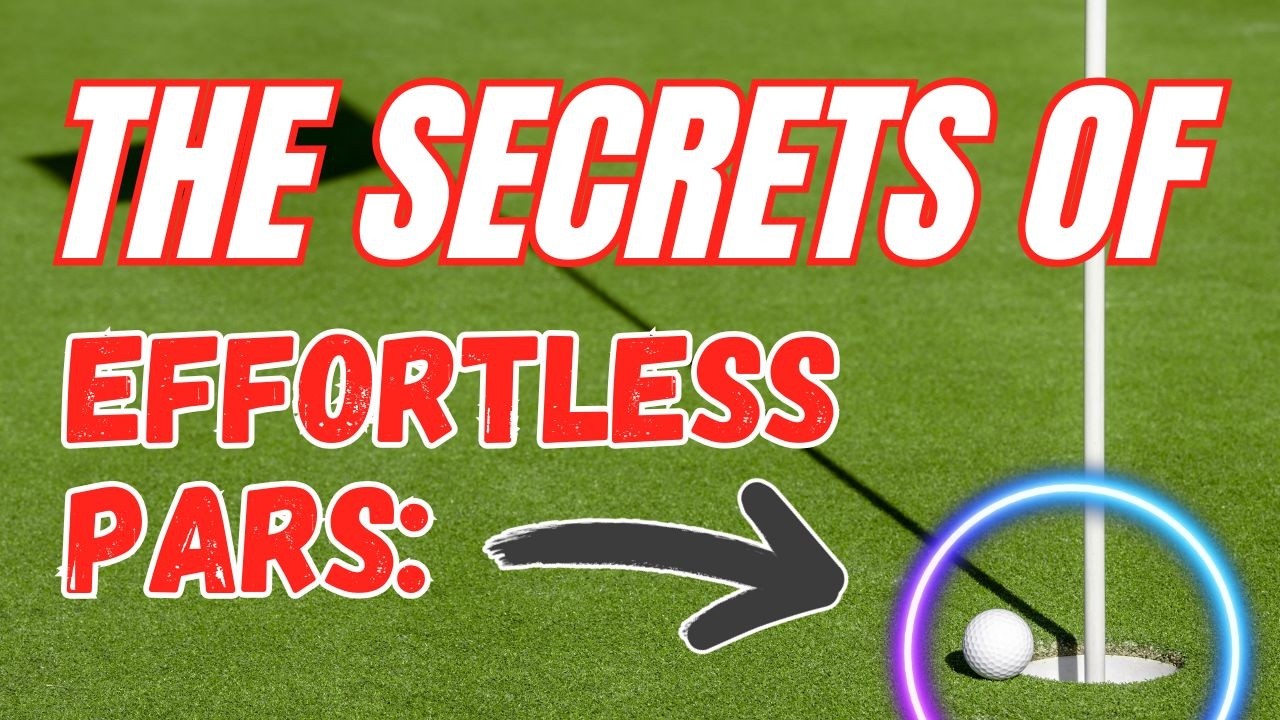
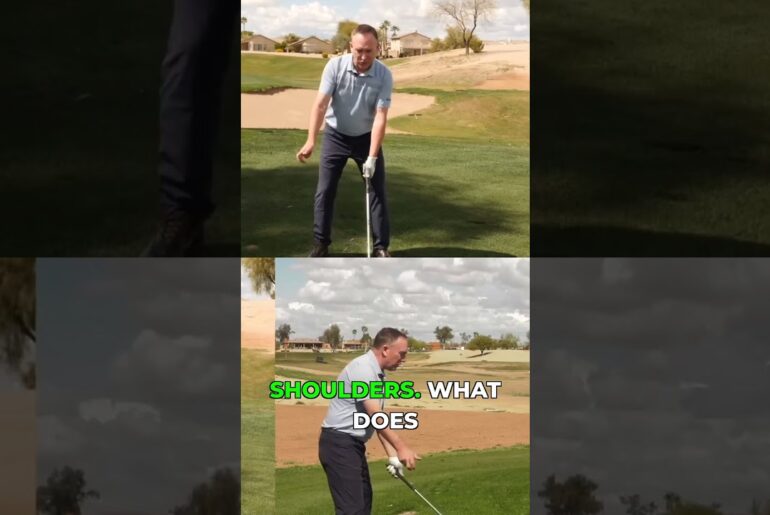


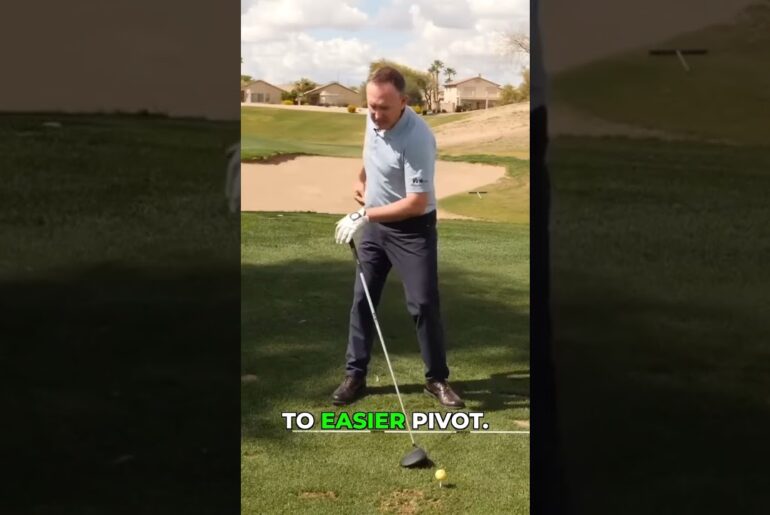
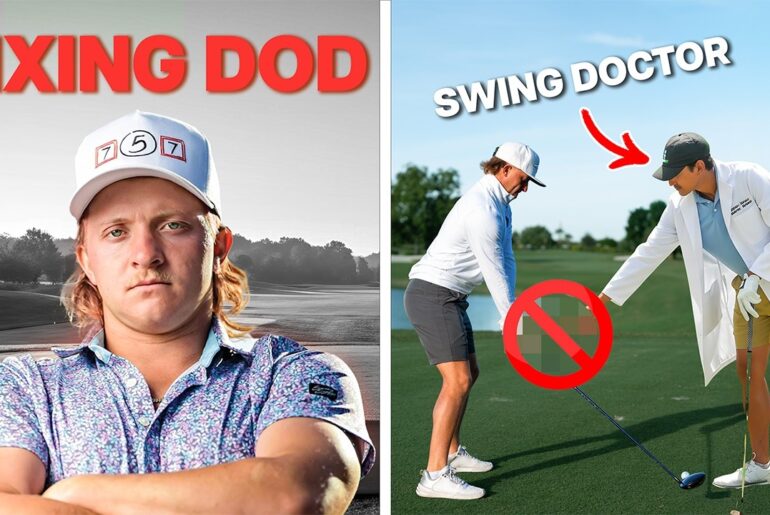
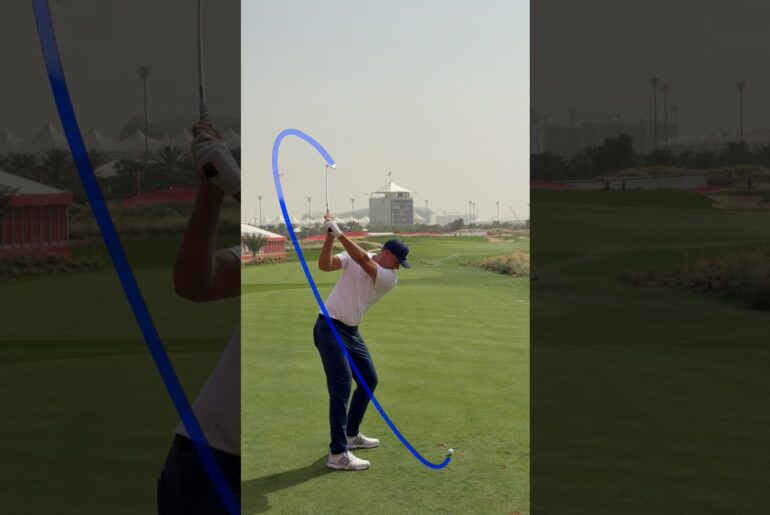
29 Comments
QUESTION:
– What part of your game do you think causes the majority of your double bogeys?
– Which of these 5 tips do think will dave you the most shots?
– Do they match up?
________ ✍
MORE INFO:
Doubles or Worse Per Round Per Index:
0 = 0.7
10 = 2.9
20 = 6.6
Looks like you had Laranjal all to yourself ( and Rory + Coach)!
I probably make around 6-7 per round. Mostly too many putts, plus issues from the sand and the occasional wayward drive.
Wonderful topic with great advice. Although, I think you disproved your Instagram / YT Short where you asked if short game or off the tee accuracy was more important to improve one's scores. If I understood it correctly, you said off the tee accuracy was more important, where as many said short game. If these 5 reasons for double bogey's are ranked in order of frequency / effect, the top 3 all involve short game technique and thinking don't they? As even when punching out with a 7i or whatever from in the trouble, that shot is essentially a short game technique (i.e. the chip and run with the 8i you showed is basically the same swing and technique with the 7i punch out, just with more power). Of course this is speaking in a general sense, each person needs to evaluate their game's strengths and weaknesses.
Also interesting to note, regardless of what is more important, the interesting bit for most of this advice is it's all mental / strategy. Picking targets and shot types per a given situation as there's so many options on what to do with so many variables that influence what to do… all of it comes down to experience and tribal knowledge from having played from those situations and trying different things to see what works.
I can never recover from a perfect tee shot.
I am a 19 index (Greg probably likes me then as I’m under 20!). I average 7.5 per round!
Double Chips: Why I started using a hybrid if possible (fairway lies).
Excellent advice on course management when playing. Cheers.
On short pitches/chips and greenside bunkers I've adopted the attitude of "Just get it on the green somewhere" and I feel like it is saving me a stroke or two per round.
I'm a 13.6 handicap and double chips are preventing me from breaking 80.
9.6 Index – Losing my Drive into gauze bushes on my home links course is my downfall. Average two ‘3 off the tees’ a round.
This would be a great topic for a podcast…..
blurry video?
Mark you mentioned Par4Success on several pods now. Have you shared the link? Can’t find it. Cheers bra.
I make 1 to 2 as a six my goal is zero, and they are always a result of hitting the ball out of play, hazard or ob
I wish that I had a good place to practice. I went to the golf course to practice pitching and chipping and they told me that I couldn’t even though I play there every week.
Last week I (16hcp) just played my first db free 18 hole round ever, at the Montgomerie course in Belek. There the reason is obvious for me, no real rough, easy semi rough, you can hardly lose a ball if you don’t spray it all over the place.
What causes it?
I’m shit…. That’s what causes it. I top the ball, I slice the ball and I can’t get more than 160 yards off the tee.
Wish me luck for tomorrow morning – and sympathy for my wonderful playing partners
Most definitely my shortish putts and the occasional greenside bunker cause my doubles approx two to three per round
Mark is looking dapper in those shorts..😄🏌
I have more than average for my index. Mid handicapper that has ok distance so can reach almost all par 4s and occasionally a par 5 in 4. However a lack of skill (which is often random lapses in concentration) kill me.
Mark. Love your content but please learn the difference between a graph and a chart!
Playing 9 holes on a Saturday now. Still always same issue with doubles. Hit the ball off the golf course. Rugby lad with loads of speed. Trying to hit it straight but occasionally it is still gone. 6 iron OB second shot Par 5! 😂 Double me up ⬆️
I’m a 12 index, about average about 6 doubles a round 😖 maybe I need to make a couple less 🤦🏼♂️🤣
My doubles are usually the result of poor ball striking. If I'm on in regulation or very close I rarely double. In order to have a chance at good ball striking I need to be in the fairway. So in the end it comes down to how well I'm driving the ball. P.S. 180!
3.5 HI, probably average 1 per.round
Love the footage, nice bit of club twirling going on as well.
Hi Mark, thanks for the interesting question. Made me think and review a bit my game. According to my data, I played this season 2,25% of my holes with a double bogey or worse. Thus, every 45 holes I played a double bogey or worse. Fun fact: these 2 db and 1 tb were all resulting from one bad round. Two from poor pitch resp. chip shots from 85 / 41 m with both times I had to play over a bunker (one resulting in a penalty shot) and one from a stupid hero shot.
Great video Mark! Cool venue